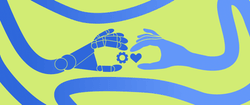Thoughts
Thoughts and Articles from Blend Interactive
Corey Vilhauer | November 26, 2025
Understanding Schema: Generative Search's Big Star

When we search for something on the web, we’re not looking for “results.” When we’re looking for the nearest children’s hospital, or the nearest credit union, we often think we’re looking for a list of options — a list of results — but that’s not really what we want. We don’t want more decisions. We don’t want randomly associated web pages.
Taylor Lopour | November 24, 2025
Planning for the Client Side of Web Projects

For marketing and digital teams, the end of the year means more than just a new date to remember — it often means conversations and planning about what the new year will bring — from goals and projects, to exciting new and big ideas.
Ryan Blackwell | September 16, 2025
The Headless Divide

Headless is here. Whether you see it scrolling by in your favorite feed or dropping into your full inbox, the term is showing up everywhere.
Joe Kepley | September 4, 2025
From SEO to GEO: Promoting Your Content In A Post-Search Era

It’s a tough time to be a web marketer.
In just a few months, change has dominated how web content is discovered and consumed. For years, the pipeline for organic traffic was simple: you run a search on one of the major providers, like Google, you take a look at the top few results, and you click the one that seems best.
Bob Davidson | August 26, 2025
Lessons Learned from Building an Optimizely SaaS Site

I’ve been building websites in content management systems for almost 20 years now. And the majority of those sites have been built in what we might call a traditional, coupled CMS, where a single application is responsible for both the management and rendering of content. But like so many, I’ve been diving to headless, specifically building a new site in Optimizely’s Software-as-a-Service (SaaS) headless offering.
Joe Kepley | August 26, 2025
Blend's Position on AI

The decades between 1870 and 1920 brought a tremendous amount of change to America. While the Industrial Revolution really began in the late 1700’s with early innovations in mechanized manufacturing and factory processes, in the lead-up to the American Civil War, many goods were still created by hand, using armies of skilled craftsmen and women who would use their years of experience to turn out one item at a time.
Sam Otis | July 25, 2025
Time to Freshen Up Your Design System?

Design systems take time to build. The speed, efficiency, and consistency they bring only begin to shine once you’ve developed a solid foundation of reusable components. But as your organization evolves, so do your needs.
Corey Vilhauer | June 17, 2025
Connecting Patients and Providers: A Guide to Upgrading Provider Search for Children’s Hospitals

When it comes to our children, even the smallest health concern can feel overwhelming. A lingering cough becomes a source of panic. A late-night fever turns into a frantic search for answers. In those moments, clarity and reassurance matter more than ever. But too often, the first point of contact — a hospital’s website — adds more confusion than comfort.
Corey Vilhauer | June 13, 2025
The Role of User Experience on a Children's Hospital Site

Designing a website for a children's hospital is unlike any other UX challenge. It’s not about selling a product or promoting a service; it's about providing care and support in a time of crisis.
Corey Vilhauer | May 28, 2025
Understanding EAA, ADA, and WCAG: A Framework of Accessibility Guidelines

Web accessibility isn’t just a checkbox — it’s a commitment to inclusive, thoughtful design. As more of our lives move online, making the web accessible to all users is no longer optional. It’s essential.
Blend Speaks.
From workshops to webinars, small groups to international conferences, Blend employees are constantly on the go, sharing their knowledge. With a unique outlook on everything from content and accessibility to small-business strategy, chances are we have someone who might help you out.
Contact us to get more information on how Blend and our team might be able to share knowledge with your team.
Book Blend to Speak